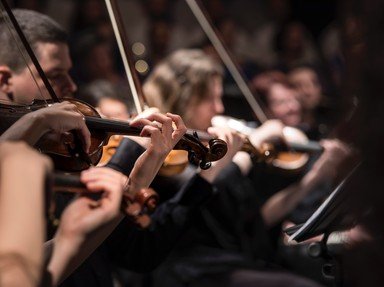Quiz Answer Key and Fun Facts
1. Despite having composed a large body of operettas, marches, cantatas, sonatas, ballads and salon pieces, this prolific composer is best known for his composition of the song that would eventually be chosen as the national anthem, "O Canada". Who was he?
2. This composer of "Variations on an Original Theme for Carillon" and "Plainsongs" was an Order of Canada recipient, who wrote over 330 pieces of music and studied with both Bela Bartok and Paul Hindemith.
3. This composer's "Lonely Child" for soprano and orchestra, the tale of a desolate child wishing to embrace the universe in innocent and naive love, drew heavily from his own feelings and experiences at having been orphaned at birth.
4. This composer of "Wine of Peace" and "Israel Sonata for Cello" is generally considered to be the first Canadian to employ the twelve-tone compositional method devised by Arnold Schoenberg. Despite his regular use of serialism, his style tends towards sweeping Romanticism in the vein of Sibelius, and often also incorporates folk music. He was a co-founder of the Canadian League of Composers.
5. Sir Ernest MacMillan was one of Canada's most important musical figures of the early 20th century. Among his many degrees, he was awarded a doctor of music degree from Oxford in 1918. What was unusual about the circumstances around the awarding of this degree?
6. This Canadian composer and ethnomusicologist is remembered primarily for his ground-breaking studies and introduction of Balinese music to the Western world.
7. R. Murray Schafer's "North/White" was an eight-minute piece written for orchestra and what other unusual "instrument"?
8. This composer, (whose grandfather, Guillaume, was also a famous Canadian composer) studied with legendary music teacher Nadia Boulanger. His compositional style, originally impressionistic and reminiscent of Debussy or Ravel, gradually evolved through his career to embrace dissonance and harmonic clashes, inspired by Stravinsky and Bartok. He would eventually unite the two styles in such works as "Le débat du coeur et du corps de Villon".
9. This work by Claude Champagne, written for orchestra, ondes Martenot and chorus, was composed as a musical representation of the Rocky Mountains.
10. This trailblazing Vancouver composer of "Twelve Essays on a Cantabile Theme" received musical instruction and critique from Ralph Vaughan Williams, Arnold Schoenberg, Bela Bartok, Aaron Copland and Darius Milhaud. She wrote more than 350 works spanning more than 70 years, and continued to compose right up until the time of her death at the age of 92.
Source: Author
Archania
This quiz was reviewed by FunTrivia editor
agony before going online.
Any errors found in FunTrivia content are routinely corrected through our feedback system.
